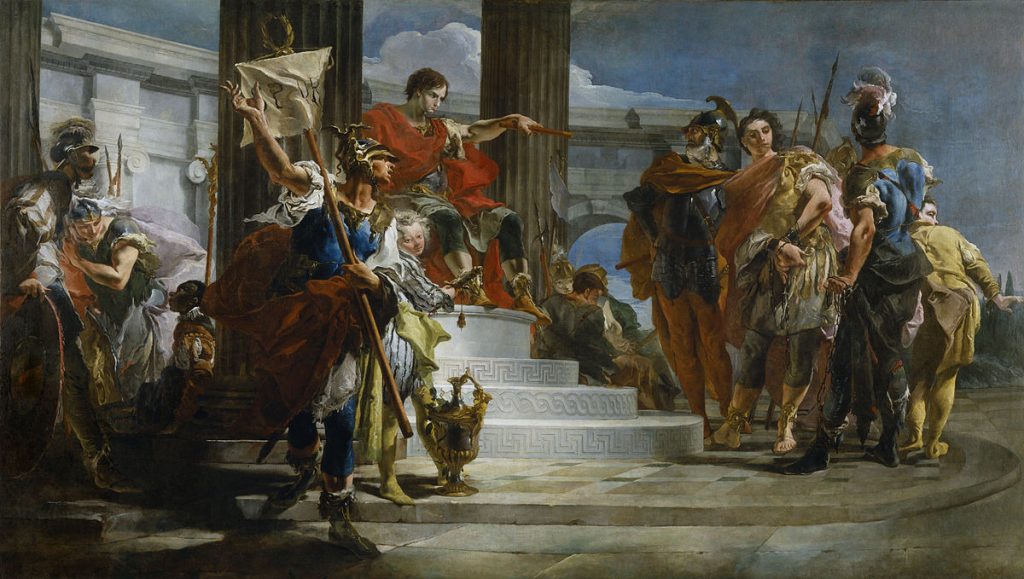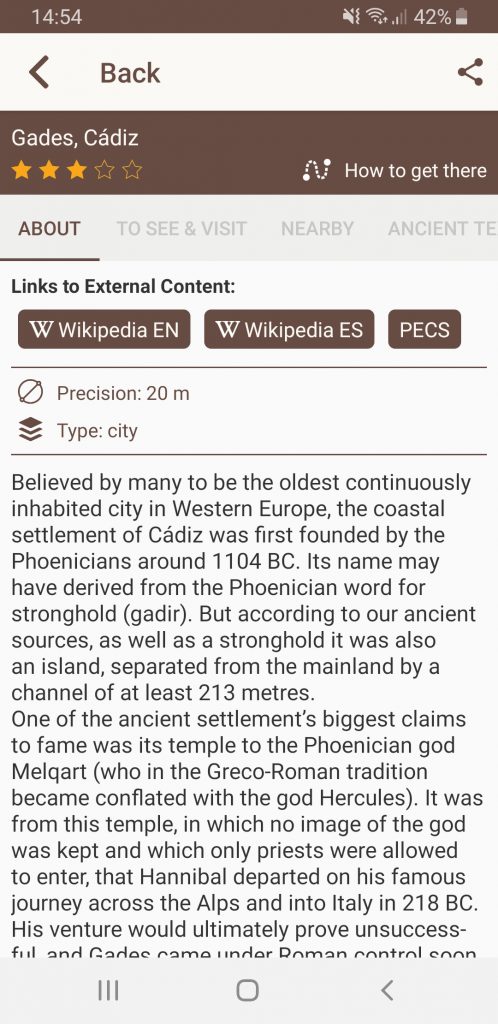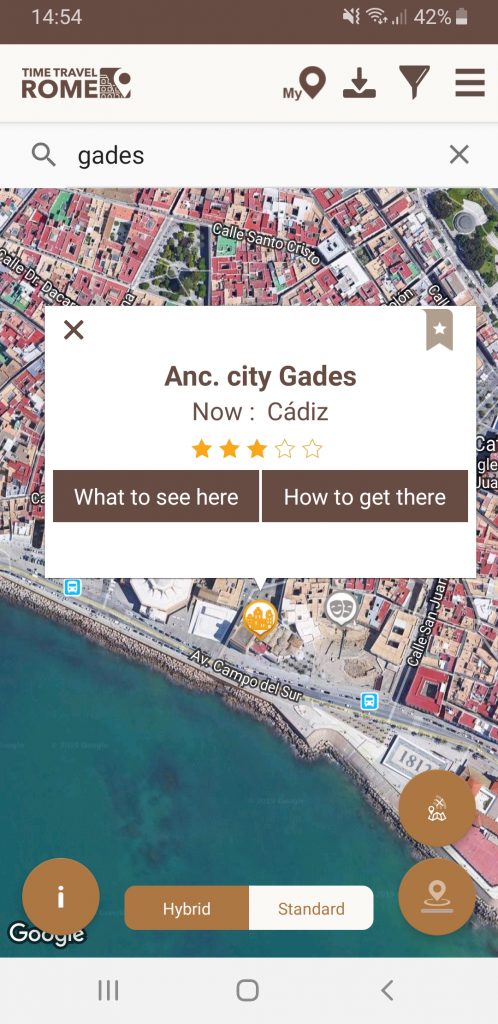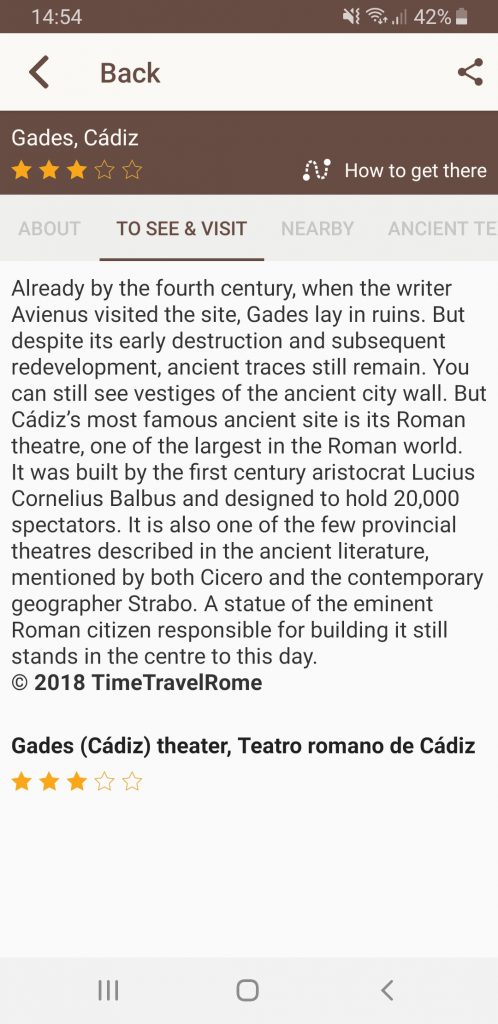Phoenician settlers from Tyre established Gades, now Cadiz, in 1104 B.C., and in the 7th century they added a connected port. According to legend, Hercules himself founded the city after defeating Geryon, a three-headed monster. It was the tenth of his famous twelve labors. The Carthaginians took the city when they invaded Spain during the 2nd Punic War. Hannibal even made sacrifices in the great temple of Melqart, the Tyrian equivalent of Hercules, asking for the hero’s blessing before undertaking his crossing of the Alps. After Scipio took Carthago Nova in 209 B.C., Gades became the main port of operations for the Carthaginians. It was near Gades in 206 B.C. that two great generals met face to face for the first time.
An Errant Nephew

Following the defeat at Carthago Nova, Hasdrubal Barca returned to Carthage to raise more troops, leaving Masinissa in sole control of cavalry operations in Spain. For the next two years, Masinissa waged a largely successful guerilla war against Scipio. Though he could not hope to achieve total victory, he greatly hampered Scipio’s progress. The two generals grew to respect one another’s skills, and a chance encounter helped Scipio earn even greater regard from the young Numidian warlord. Following a skirmish, the Romans learned that one of their Numidian prisoners was of royal blood. They brought the frightened boy before Scipio, and explained that he was Massiva, the orphaned nephew of Masinissa himself. He had joined the campaign to Spain, but Masinissa would not allow the boy to participate in a battle.
On that day, however, without his uncle’s knowledge, Massiva had found weapons and snuck into the action. He had been captured when his horse fell and the impact threw him from the animal. Scipio made no demands or conditions, but merely asked whether the boy would like to return to his uncle. Massiva burst into tears, replying in the affirmative, and Scipio not only sent him safely back with his own cavalry escort for as far as he wished, but gave him a gold ring, purple-bordered tunic, and a beautiful horse, adorned with the finest tack. Masinissa was overjoyed to find his nephew unharmed, and deeply grateful to Scipio for his return.
The Battle of Ilipa
In the spring of 206 B.C., Hasdrubal Barca returned from Africa with reinforcements. The Carthaginians, together with their Numidian allies, marched from Gades with a force of around 70,000 men. They outnumber the Romans by about 20,000. The two armies encamped near Ilipa, and spent the next few days lining up for battle without engaging. Each day Scipio had his men take their time and line up after the Carthaginians. He always placed his Roman legions in the center of his line and his Spanish allies on the two wings. When he was convinced that the Carthaginians had taken the bait, Scipio ordered his men fed and prepared before daylight, then lined up for battle close to the Carthaginian camp, with his line swapped, Romans on the wings and allies in the center. Taken by surprise, the Carthaginians rushed to form up.

They placed their best soldiers in the center and their allies on the outside, believing that Scipio had arranged his army as before. By the time they realized their mistake, it was too late to reform. Their soldiers had also not had breakfast, a fact Scipio exploited by drawing the battle out longer. Eventually he sent in in his wings to attack quickly, holding the center back. The highly trained Roman soldiers overwhelmed the less experienced Iberians. Meanwhile the best Carthaginian soldiers were unable to aid their comrades for fear of the lagging Roman center. The Carthaginian line crumbled, and a sudden heavy fall of rain enabled them to reach shelter in their camp. All through the night, the Spanish allies deserted to the Roman cause, and in the morning, the Romans attacked the surviving Carthaginian infantry, leaving only 6,000 alive.
New Friendships
Scipio next marched for Gades, where the remaining Carthaginian forces were gathering. Upon hearing of Scipio’s impending arrival, Masinissa was determined to meet him. He told the Carthaginian general Mago that he and his soldiers needed to go on a sortie to condition their horses and plunder supplies, and he sent three of his Numidians to request an audience with Scipio. The two men met in mutual admiration. Masinissa began with thanks for the return of his nephew, going on to say that he had been looking for a chance to express his gratitude in person ever since that day. He was impressed by Scipio’s abilities on the battlefield, disillusioned with his former allies, and felt sure that he could be of service to Scipio in Africa, and help ensure a quick defeat of Carthage.

Scipio “watched him and listened to him with great pleasure. He knew that Masinissa was the master-spirit in all the enemy’s cavalry, and the youth’s whole bearing showed high courage” (Livy). The two young generals quickly developed a mutual affection, and ended the meeting by pledging loyalty to one another. Masinissa returned to Gades, but soon sailed for Africa, having received word that his father, the king, had died. Mago made one ill-fated attempt to recapture Carthago Nova by sea, and when he returned to Gades, found that the people had revolted, and held the gates shut against him. They welcomed Scipio and the Romans. Carthage had lost its hold on Spain, and Scipio returned to Rome to seek approval for an African campaign. Meanwhile, Masinissa faced his own trials back in Numidia, as he fought to retain his royal inheritance.
This article was written for Time Travel Rome by Marian Vermeulen.
Photo: Jan Styka – Nero at Baiae by Jan Stykais licensed under CC0
Sources: Livy, History of Rome; Polybius, The Histories
What to See Here?
Already by the fourth century, when the writer Avienus visited the site, Gades lay in ruins. But despite its early destruction and subsequent redevelopment, ancient traces still remain. You can still see vestiges of the ancient city wall. But Cádiz’s most famous ancient site is its Roman theatre, one of the largest in the Roman world.
It was built by the first century aristocrat Lucius Cornelius Balbus and designed to hold 20,000 spectators. It is also one of the few provincial theatres described in the ancient literature, mentioned by both Cicero and the contemporary geographer Strabo. A statue of the eminent Roman citizen responsible for building it still stands in the centre to this day.
To find out more: Timetravelrome.





